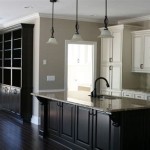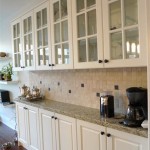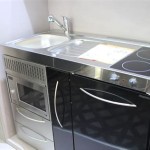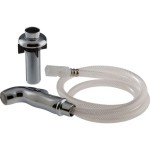Cost To Tile Kitchen Backsplash: A Comprehensive Guide
A kitchen backsplash serves both functional and aesthetic purposes. It protects the wall behind the stovetop and sink from splashes and spills, and it enhances the overall design of the kitchen. When considering a kitchen renovation or even a simple upgrade, the cost of tiling the backsplash is a crucial factor. This article provides a detailed breakdown of the costs associated with tiling a kitchen backsplash, encompassing materials, labor, and other potential expenses.
Material Costs: Understanding the Range
The primary driver of cost when tiling a backsplash is the tile itself. Tile prices vary widely depending on the material, size, design, and quality. Common tile materials used for backsplashes include ceramic, porcelain, glass, stone, and metal. Understanding the characteristics and pricing of each material is essential for budget planning.
Ceramic Tile: Ceramic tile is one of the most affordable options for a kitchen backsplash. It is durable, easy to clean, and comes in a wide variety of colors, patterns, and sizes. Basic ceramic tiles can range from $1 to $5 per square foot. More decorative or specialty ceramic tiles may cost more.
Porcelain Tile: Porcelain tile is denser and more durable than ceramic tile, making it a good choice for high-traffic areas. It is also resistant to water damage and staining. Porcelain tiles typically range from $3 to $10 per square foot. Porcelain tile that mimics natural stone or wood may cost even more.
Glass Tile: Glass tile offers a sleek and modern look to a kitchen backsplash. It is available in various colors, shapes, and sizes, including mosaics. Glass tile is typically priced between $7 and $20 per square foot. The cost can increase depending on the complexity of the design and the quality of the glass.
Stone Tile: Natural stone tile, such as granite, marble, slate, and travertine, provides a luxurious and elegant appearance. However, it is also one of the most expensive options. Stone tile can range from $10 to $50 per square foot, depending on the type of stone and its rarity. Stone tiles also often require sealing and special cleaning agents, which adds to the overall cost.
Metal Tile: Metal tile, such as stainless steel, copper, or aluminum, can add a contemporary and industrial touch to a kitchen. It is durable and easy to clean but can be susceptible to scratches. Metal tile typically ranges from $8 to $30 per square foot, depending on the type of metal and the design.
In addition to the tile itself, other materials are necessary for the installation process. These include:
Thin-Set Mortar: Thin-set mortar, also known as tile adhesive, is used to adhere the tiles to the wall. The cost of thin-set mortar is typically between $15 and $30 per bag, and the amount needed will depend on the size of the backsplash area.
Grout: Grout fills the spaces between the tiles and provides a watertight seal. The cost of grout varies depending on the type and color. A standard bag of grout typically costs between $15 and $40.
Sealant: Tile sealant is used to protect the grout from staining and water damage. The cost of sealant is typically between $10 and $20 per bottle.
Spacers: Tile spacers ensure consistent spacing between the tiles. They are relatively inexpensive, costing around $5 to $10 per bag.
Cutting Tools: If the tiles need to be cut to fit the backsplash area, a tile cutter or wet saw will be required. A basic tile cutter can cost around $30 to $50, while a wet saw can cost $100 or more. Renting a wet saw is also an option.
Labor Costs: Hiring a Professional vs. DIY
Labor costs represent a significant portion of the overall cost to tile a kitchen backsplash. The cost of labor will depend on several factors, including the complexity of the project, the size of the backsplash area, the type of tile being installed, and the geographic location. Homeowners have the option of hiring a professional tile installer or attempting the project themselves.
Professional Tile Installation: Hiring a professional tile installer ensures that the backsplash is installed correctly and according to industry standards. Professional installers have the experience, tools, and knowledge to handle various tile types and installation challenges. The cost of professional tile installation typically ranges from $4 to $15 per square foot, depending on the factors mentioned above. More complex designs, such as herringbone patterns or intricate mosaics, will likely command a higher labor rate.
When obtaining quotes from professional installers, it is essential to ask for a detailed breakdown of the labor costs, including the cost of demolition of existing backsplash, preparation of the surface, tile installation, grouting, sealing, and cleanup. It is also important to verify the installer's credentials, insurance, and references.
DIY Tile Installation: Installing a kitchen backsplash as a DIY project can save on labor costs, but it requires time, effort, and some degree of skill. While a simple backsplash installation might be manageable for a handy homeowner, more complex designs or difficult tile materials may be best left to the professionals. The cost of a DIY installation is primarily limited to the cost of materials and tools.
Before embarking on a DIY tile installation, it is crucial to thoroughly research the process, watch tutorials, and understand the necessary techniques. Proper preparation of the surface, precise tile cutting, and careful grouting are essential for achieving a professional-looking result. If the DIY installer makes mistakes, the cost of correcting those mistakes could negate any savings on labor.
Factors that could significantly increase the complexity and therefore either the cost of labor or the difficulty of a DIY installation include:
- Complex Patterns: Installing intricate patterns like herringbone, subway tile with offsets, or mosaics requires significant skill and time.
- Difficult Cuts: Tiles that require many cuts, especially around outlets, windows, or irregular shapes, increase both the material waste and the labor.
- Unlevel Surfaces: Walls that are not perfectly level or plumb will require more preparation work before tiling, adding to the time and cost.
- Dealing with Existing Backsplash: Removing an existing backsplash can be time-consuming and potentially damage the drywall behind it, necessitating repairs before the new tile can be installed.
Additional Costs: Hidden Expenses to Consider
In addition to the cost of materials and labor, there are several other potential expenses to consider when budgeting for a kitchen backsplash installation. These additional costs can include:
Demolition and Removal: If an existing backsplash needs to be removed, there may be a demolition and removal fee. This fee can range from $50 to $200, depending on the size of the backsplash area and the complexity of the removal process. Removing an existing tile backsplash can be strenuous and messy, potentially damaging the wall behind it, which can necessitate additional repair costs.
Surface Preparation: Before tiling, the wall surface needs to be clean, smooth, and level. This may involve patching holes, repairing drywall, or applying a primer. The cost of surface preparation can range from $20 to $100, depending on the extent of the work required.
Electrical Work: If electrical outlets or switches need to be relocated or adjusted during the backsplash installation, the services of a licensed electrician will be required. The cost of electrical work can range from $50 to $200 per outlet or switch.
Plumbing Work: If necessary, disconnecting and reconnecting the sink plumbing can add to the cost. This should be performed by a licensed plumber and typically costs between $75 and $200.
Permits: Depending on the local building codes, a permit may be required for the backsplash installation. The cost of a permit can range from $50 to $100.
Waste Disposal: Disposing of old tile, mortar, and grout can incur a cost. This may involve renting a dumpster or paying for waste removal services. The cost of waste disposal can range from $50 to $150.
Unexpected Repairs: During the backsplash installation, unexpected issues may arise, such as damaged drywall or hidden plumbing problems. These issues may require additional repairs, which can add to the overall cost of the project. It is always wise to have a contingency fund to cover unexpected expenses.
To mitigate unexpected expenses, it is advisable to have a thorough inspection of the area before starting the project. This inspection should identify any potential issues that may need to be addressed, such as water damage, mold, or structural problems. Addressing these issues proactively can prevent them from becoming more significant and costly problems later on. It's also recommended to purchase slightly more tile than needed (typically 10-15%) to account for cuts, breakage, and future repairs.
The cost of tiling a kitchen backsplash can vary widely depending on the factors discussed in this article. By carefully considering the material costs, labor costs, and other potential expenses, homeowners can develop a realistic budget for their backsplash project and avoid unexpected financial surprises. Getting multiple quotes from reputable contractors and meticulously planning the project are key steps toward achieving a beautiful and functional kitchen backsplash at a reasonable price.

Kitchen Backsplash Installation Cost What Is It In Tucson

Kitchen Backsplash Installation Costs 2024 Estimates Mk

2025 Backsplash Installation Cost Kitchen Tile Prices

How Much Does A Marble Backsplash Cost To Install 2025 Data Angi

Back Splash Tile Cost Guide

2025 Subway Tile Cost Install Backsplash Shower Prices

Kitchen Backsplash Cost In 2025 An Essential Guide For Homeowners

Kitchen Backsplash Cost In 2025 An Essential Guide For Homeowners

Kitchen Backsplash Installation Cost What Is It In Tucson

Ceramic And Porcelain Tile Cost Installation Price








